Croatia Pan Europe Trains Will Run 160 Kilometres Per Hour By 2030
November 2, 2020 – From southern Spain to Budapest through Rijeka and Zagreb and from Salzburg through Zagreb, Belgrade and Skopje to Greece, Croatia pan Europe trains will run 160 kilometres per hour by 2030
In the biggest investment ever made in the infrastructure of the country's rail network, Croatia pan Europe trains will run 160 kilometres Per Hour By 2030. In an investment costing 4.5 billion Euros, 750 kilometres of railways will be modernised.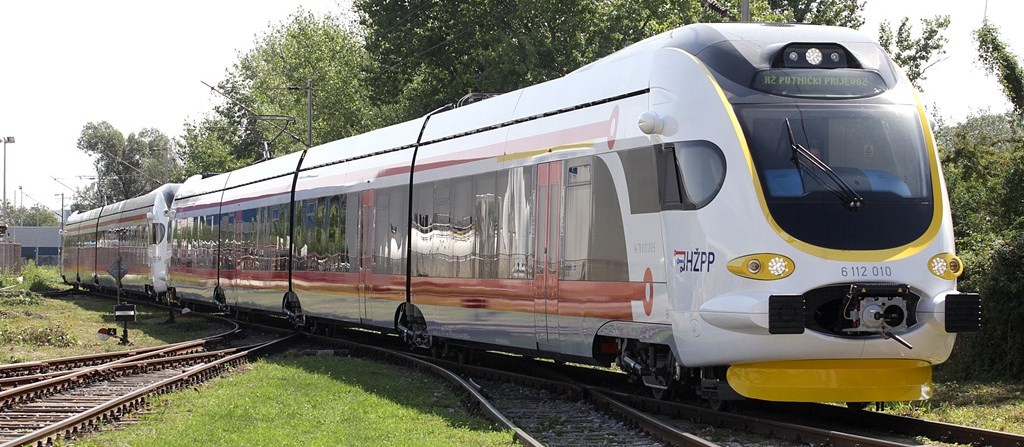 © HZPP
© HZPP
The lines that will receive the upgrade will connect Rijeka to Budapest in Hungary via Zagreb (RH2) and Zagreb to Belgrade via Vinkovci (RH1). Though these lines already exist, they have never undergone an overhaul of the scale proposed. The modernisation with ensure double lanes across the whole of both routes and facilitate passenger train speeds of 160 kilometres per hour.
The level of investment means that during the next ten years, HŽ Infrastruktura's (Croatian Railway Infrastructure Company) rebuild of the Croatia pan Europe trains network will be the largest infrastructure project in the Republic of Croatia and the largest beneficiary of EU grants in the transport sector. Most of the money for the modernisation is coming from European Union grants. Almeria on the Mediterranean, in Andalusia, southern Spain, where the Mediterranean Corridor begins © ddz photo
Almeria on the Mediterranean, in Andalusia, southern Spain, where the Mediterranean Corridor begins © ddz photo
The RH2 line is part of the Mediterranean Corridor which connects the south of the Iberian peninsula with eastern Hungary via six countries. The line runs from Almeria on the Mediterranean coast in the south-east of Spain, through Madrid and Barcelona. It passes through Marseille in France, then northern Italy, Slovenia, Croatia, the Hungarian capital of Budapest, before finishing in Záhony in the east of Hungary, not far from the border with Ukraine. The route covers more than 6000 kilometres. The Croatian section will pass through Jurdani (six kilometres north of Opatija), Rijeka, Karlovac, Zagreb, Dugo Selo, Križevci and Koprivnica.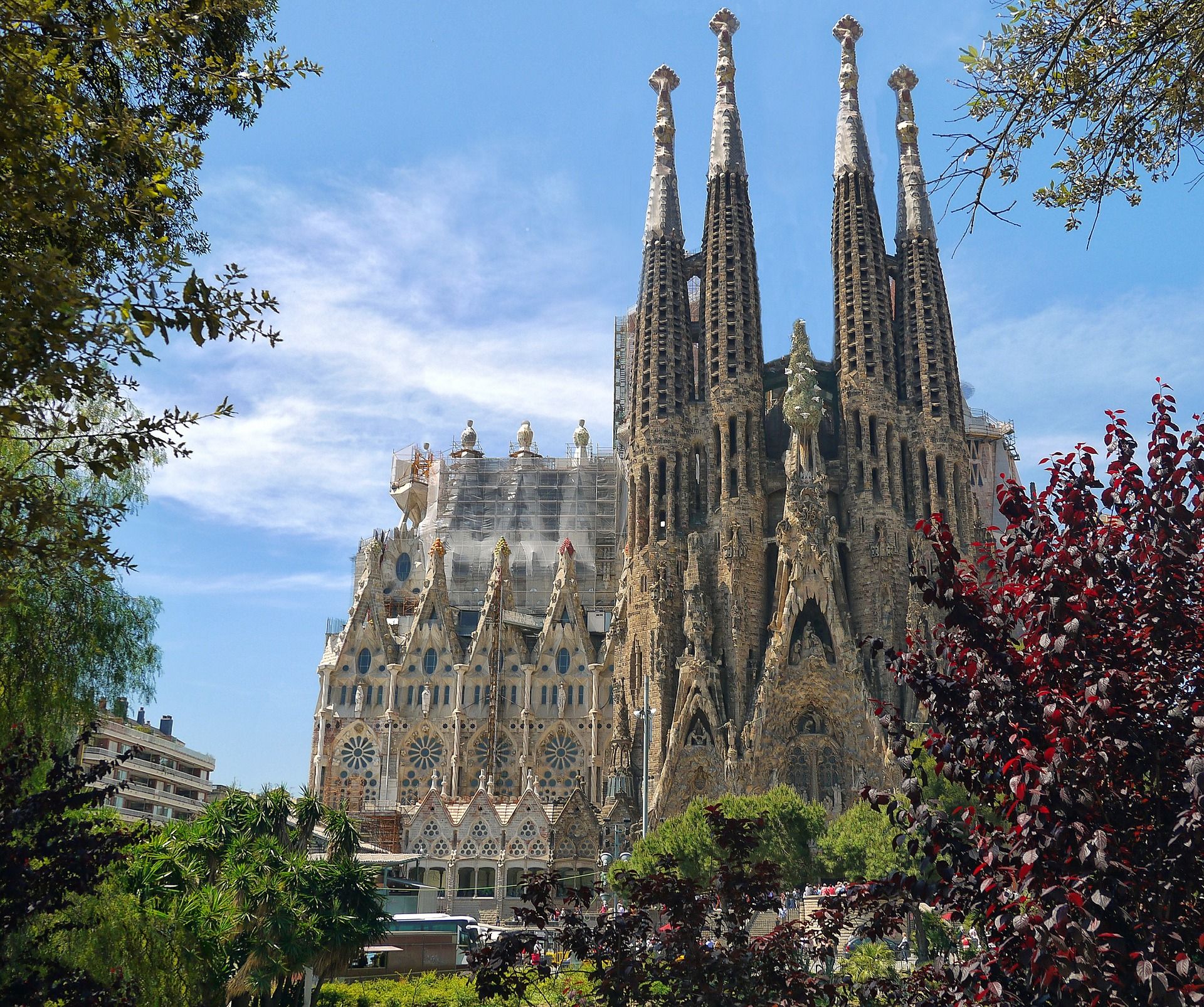 To Croatian rail passengers, the Spanish city of Barcelona will be just a few hours away by 2030 © Patrice Audet
To Croatian rail passengers, the Spanish city of Barcelona will be just a few hours away by 2030 © Patrice Audet
The RH1 line is part of the Pan-European Corridor X. The Croatia pan Europe trains section of this transport route was once one of the three lines taken by the Orient Express. The modernised rail line will start in Salzburg, Austria and pass through Ljubljana before reaching Zagreb. The line will pass through Slavonski Brod and Vinkovci before making its way to Belgrade, then Niš in southern Serbia. The old Oriental Express line then headed east, to Istanbul via Sofia, Bulgaria. The EU-funded train section of the Pan-European Corridor X instead heads south, to Thessaloniki in Greece via Skopje in Macedonia.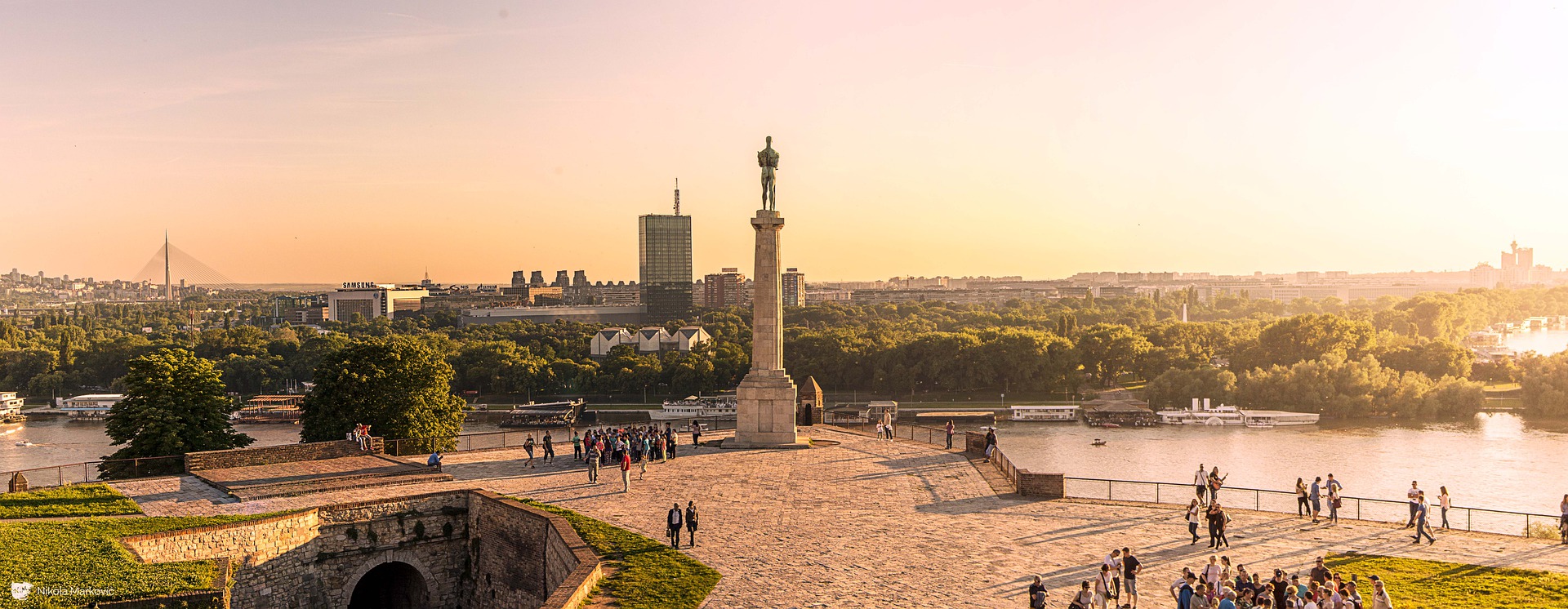 The rail journey time between Zagreb and Belgrade (pictured) will be shortened considerably by the improvements © Djordje Jovanovic
The rail journey time between Zagreb and Belgrade (pictured) will be shortened considerably by the improvements © Djordje Jovanovic
Trains are currently the greenest transport option for long-distance travel. As the world heads in the direction of seeking energy sources that do not rely on finite fossil fuels, rail also currently looks to be the long-distance travel option best-equipped to meet this challenge. In the future, visitors from all across Europe may increasingly rely on the Croatia pan European trains network in order to access the country. The improvements also increase business and leisure opportunities for Croatians in Europe. Thessaloniki in Greece is one of the most popular cities in Europe for visitors. The renewed rail section of the Pan European Corridor X will end here © Dimitris Vetsikas
Thessaloniki in Greece is one of the most popular cities in Europe for visitors. The renewed rail section of the Pan European Corridor X will end here © Dimitris Vetsikas
Around 935 million Euros was invested in the Croatian railway infrastructure between 2010 and 2019. The new investment dwarfs those figures. The initial investment, occurring between 2020 and 2024 amounts to as much as 1.8 billion Euros, of which almost 78.7 per cent is co-financed by the European Structural and Investment Funds (ESI) and the Connecting Europe Facility (CEF). From 2025 to 2030, EU funds totalling more than 2.7 billion Euros are expected to be invested in the Croatia pan European trains network.
Freight train passage along the lines will also be increased, reaching a new speed of 120 kilometres per hour. The Croatia pan European trains network also offers great potential to open up continental Croatia regions to international visitors. The Croatian railway network currently has 2,617 kilometres of track, of which 274 kilometres are double-track and 980 are electrified.
For the latest travel info, bookmark our main travel info article, which is updated daily.
Read the Croatian Travel Update in your language - now available in 24 languages
Latest Jobkeeping Measures Welcomed by Croatian Tourism Association
ZAGREB, Oct 21, 2020 - The Croatian Tourism Association (HUT) on Wednesday welcomed the government's latest jobkeeping measures and amendments to eligibility criteria with regard to a decline in turnover in the second and third quarters of the year.
In the association's (HUT) latest issue of "Croatia Tourism & Travel", HUT director Veljko Ostojic underlines that the continuation of the government's job retention measures and changes to eligibility criteria with grants in proportion to the fall in turnover in Q2 and Q3 compared to the corresponding period in 2019, has expanded the number of enterprises that will apply for the measures.
"That is the key to keep workers in the tourism sector. Since the outbreak of the pandemic we have stressed that this is the most important link in the chain to keep jobs and in that regard, the survival of enterprises. We welcome the government's decision to continue implementing its measures until the end of the year in the belief that they will be extended to 1 April 2021 or the start of the tourism season," said Ostojic.
He believes that the recovery of the tourist trade is the key to Croatia's economic recovery and that it is essential to avoid laying off workers because that would have a negative impact on Croatia's overall recovery.
ADAC: Italy and Croatia most popular destinations for Germans
Apart from that, HUT released the latest analysis by Germany's ADAC automobile association on travel by Germans this year noting that Croatia is just a step away from Italy in being the most popular foreign tourist destination for Germans in 2020 as 14.3% of Germans chose Croatia as their holiday destination while 14.9% opted for Italy.
However, according to the survey, Croatia once again surpassed Italy with regard to camping tourism with Istria chosen as the most popular camping region for Germans while Dalmatia 'jumped' from fifth to second place among most favorite regions.
"The results of this survey and the hugely positive step by Croatia's Istria and Dalmatia regions in the eyes of German tourists provides us with a clear direction for Croatia's tourism promotion and communication for next year," said Ostojic.
He added that ADAC's survey showed that Croatia's campsites recorded the best improvement in quality in Europe, including those in Istria which scored an average of 4.2 points on a scale of 1 to 5.
For the latest travel info, bookmark our main travel info article, which is updated daily.
Read the Croatian Travel Update in your language - now available in 24 languages
Lonjsko Polje Nature Park Sees 50% more Visitors
ZAGREB, Oct 21, 2020 - Lonjsko Polje Nature Park this year had about 50% more visitors than last year, which is a result of increased communication activities, but also of people turning to nature and spending time outdoors, the director of Lonjsko Polje Nature Park, Marija Kusmis, said.
"We have adapted quickly and systematically to the new circumstances and people have recognized that, and although we opened the Park two months later than usual this year, in May, we had twice as many individual visitors than last year, 5,300 of them," Kusmis said in a press release on Tuesday.
A new way of managing visits to the Park has been introduced, she says, and after kindergartens, schools, and groups of pensioners canceled their visits, communication was shifted to families with children, nature lovers, and all those who like an active lifestyle and nature.
"All employees and visitors have been adhering to the measures and recommendations by epidemiologists, and thanks to the nice weather in these autumn days, we believe that the number of visitors will grow further, especially in the 'Week of Vacation', when we reduced ticket prices by 50%," Kusmis said.
She said that they had increased their tourist offer and that they now managed the boat Juran and Sofija, which sailed along the Kupa River in Sisak, and boats and canoes in the eco-ethno village Strug were available, as well as professional guides.
Some of the attractions she mentioned also include visiting the village Krapje, where people and Lonjsko Polje coexist, bird-watching in the ornithological reserve Krapje Djol, and traditional cattle grazing in Repusnicko Polje field.
For the latest travel info, bookmark our main travel info article, which is updated daily.
Read the Croatian Travel Update in your language - now available in 24 languages
Tourists Spend Average €98 Per Day
ZAGREB, October 11, 2020 - Tourists vacationing in Croatia in 2019 spent a daily average of €98 per person and per overnight stay, with the amount being slightly higher in the continental part of the country, €115, and a little lower on the coast, €97, shows a survey conducted by the Institute of Tourism.
The survey, which has been conducted for 30 years and is one of the oldest in Europe, covered close to 14,000 respondents, domestic as well as foreign, coming from 24 markets, who stayed at least one night in hotels, hostels, at camping sites or in private accommodation facilities in 143 places across Croatia.
This is the first time the survey, conducted with the support of Tourism and Sports Ministry, also covered visitors to the continental part of Croatia. Due to the coronavirus pandemic, it was completed sooner than planned, in March instead of May.
In 2019, the record year for the Croatian tourism industry in terms of the number of arrivals and overnight stays, the average consumption of tourists vacationing on the coast was around 18% higher than in the summer of 2017 and they were slightly more satisfied with tourist services. As continental tourism was included in the survey for the first time, it was not possible to make a comparison of most of those data or overall indicators.
Accommodation costs account for 54% of daily consumption
In the period from May 2019 to March 2020, 54% of the overall average daily consumption were costs of accommodation and food, and only 17% were costs of food and drinks served outside accommodation facilities. All the other services accounted for 30% of the average daily consumption.
Even though average daily consumption in coastal destinations was €97 and in the continental part of the country €115 per person, the Institute of Tourism says that there are no significant differences in the structure of average daily expenses in the two regions.
Hotel guests spend the most on average, €142, followed by guests in family-run accommodation facilities, €88, guests in hostels, €78, and tourists staying at camping sites, €68.
Tourists spent a minimum €67 per day, as spent by visitors from Bosnia and Herzegovina, and a maximum €206, which is how much Japanese tourists spent per day on average.
Other tourists who spent above-average amounts were those from the United States (€174), the Republic of Korea (€157), China and other Asian countries (€150), and Great Britain (€143), followed by tourists from Switzerland (€118), Scandinavian countries (€115), Spain and France (€107), Austria and Belgium (€102) and Serbia (€100).
Average visitor aged 43, half have monthly income of more than €3,000
The survey also shows that the average age of visitors is 43, that 55% of them are aged 30-49, and that 43% have a university degree while almost half have a monthly household income of more than €3,000.
The most frequently cited motives for visiting the Croatian Adriatic were sea and nature (81% and 56% respectively), city break (24%), touring (21%), sport and recreation (15%), culture and art (13%) and gastronomy, entertainment and festivals (7% and 6% respectively).
The most frequently cited reasons for visiting the continental part of Croatia were nature (32%), touring and city break (26%), sport and recreation (24%), business (22%), culture and art (16%), hiking and rural tourism (10%) and gastronomy and events (7% and 6% respectively).
More than 50% of foreign visitors had already visited Croatia three or more times, of whom 52% had already visited the Adriatic and 33% the continental part of the country; 33% of foreign visitors visited Croatia for the first time, of whom 32% visited the coast and as many as 53% visited the continental part of the country.
The Internet was the main source of information on destinations for 55% of the respondents, followed by recommendations by family members and friends. Most of the foreign visitors to the coast, 43%, arrived, as before, with their families, and 40% with their partners.
Interestingly, close to 40% of visitors to the continental part of the country arrived alone, 32% were with their partners, 16% with their friends, and only 14% with their families.
As for the means of transport they used to come to Croatia, 73% of those who stayed on the coast arrived by car, 19% arrived by plane and 6% by bus while around 50% of those who visited the continental part of the country arrived by car, close to 40% by plane and 9% by bus.
Visitors most satisfied with nature, atmosphere, hospitality
Visitors covered by the survey were satisfied the most with individual tourist services and natural and local attractions, as well as personal safety, atmosphere and the hospitality of local residents, and they were also very satisfied with the overall quality of their stay.
They also gave high marks for the cleanliness of the place they stayed in and of the beaches in the entire country, as well as for accommodation facilities, ecological preservation and transport accessibility as well as opportunities for destination exploration, walking, gastronomy, children-friendly conditions, and culture and art.
Nonetheless, they said they would prefer more entertainment, better conditions for persons with disabilities and more cycling routes in the continental part of the country. As regards the coast, they were least satisfied with local traffic, as well as with the lack of entertainment possibilities, the level of adaptation to persons with disabilities and insufficient shopping possibilities. Some also complained about crowding, garbage that has been inappropriately disposed of and the absence of waste sorting.
Croatian Hoteliers' Revenues Dropping 25-75%, Recovery Expected in 2 or More Years
ZAGREB, Oct 7, 2020 - Croatian hoteliers expect this year's revenues to drop 25-75% due to the COVID pandemic and half believe recovery will take two or more years, with holiday tourism expected to recover faster and convention tourism much slower, a director in the Horwath HTL consulting company says.
Such findings come from the company's analysis of the so-called COVID year in which the pandemic has affected every industry around the world, notably tourism.
Sinisa Topalovic says the forecasts for 2021 and the growth of the global GDP are somewhat encouraging, but that recovery by country will depend and be faster if they are industrially strong, while being harder and slower in those focused on services such as Croatia.
Global and country forecasts say consumption is expected to recover in 12 to 24 months, which is a very long time, notably in tourism, which has been globally affected by the pandemic, from air travel to the hotel industry, which are recording drops in revenues from 60% to 80%, and they will not recover soon, says Topalovic.
Croatia at EU's bottom in hotel occupancy but near the top in prices
In such circumstances, Croatia managed to generate above-average results when compared with the competition in the first eight months of the year, about 40% of last year's turnover, but next year could be at least 10 to 20 percentage points better, also thanks to this year's experience, according to a Horwath HTL analysis.
Croatia's average hotel occupancy rate in the first eight months of this year was 24%, ranking it at the bottom of the EU, but in terms of prices it ranks relatively high because during the short summer holiday season Croatian hoteliers managed to keep relatively good prices, which is good given that after being lowered due to the 2008-09 crisis, they took a long time to recover, says Topalovic.
Three markets saved the season
The analysis shows that only three markets, of the more than 70 from which tourists came to Croatia in the past, saved this year's season, generating up to 60% of the total turnover - Germany, Croatia, and Slovenia.
Croatian tourists "gave life to numerous destinations" and their arrivals and overnights registered the smallest decreases from the record year 2019, the analysis says.
For the latest travel info, bookmark our main travel info article, which is updated daily.
Read the Croatian Travel Update in your language - now available in 24 languages
Time To Reflect, As Loyalty Not Luxury Saves 2020 Croatia Tourist Season
September 28, 2020 – The tail end of 2020's unparalleled summer offers opportunity for pause, contemplation and appreciation, as it's loyal and not luxury guests that have saved this year's Croatia tourist season.
In this day and age, things always have to get better. There's no room to sit still. Life without improvement is deemed a failure. Nowhere is this more true than the Croatia tourist season.
The numbers of overnight stays in the Croatia tourist season sometimes seem to be the only measure by which its success is judged. Year after year, the numbers must rise. Any decrease is unthinkable. At the same time, hungry eyes still want more. Some want to reposition themselves. A new class of guest is wanted, from faraway nations. They must be of a better quality. They must stay longer, in more expensive dwellings. They must spend more.
Incredible initiatives are undertaken to turn this want into a reality. But, at the end of the 2020 Croatia tourist season, perhaps it's time to pause and reflect. For this year, it is undoubtedly loyalty and not luxury that's saved the Croatia tourist season.
In the year the coronavirus pandemic hit, arrivals by charter plane and cruise ship were seriously curtailed. So much for the flying visits of premium guests from far-flung lands. Instead, the tourists who came were from much closer to Croatia.
The English language that most on the coast are so familiar with was this year useless. On the beaches of Istria and northern Dalmatia, it was Slovenian, Polish, Czech, German, Slovakian and Italian that was heard. The packed bars of Makarska echoed with the familiar call of 'Đe si, bolan?' (where are you, bro? - in Bosnian dialect). Many of those who came drove to Croatia. And many do so every year.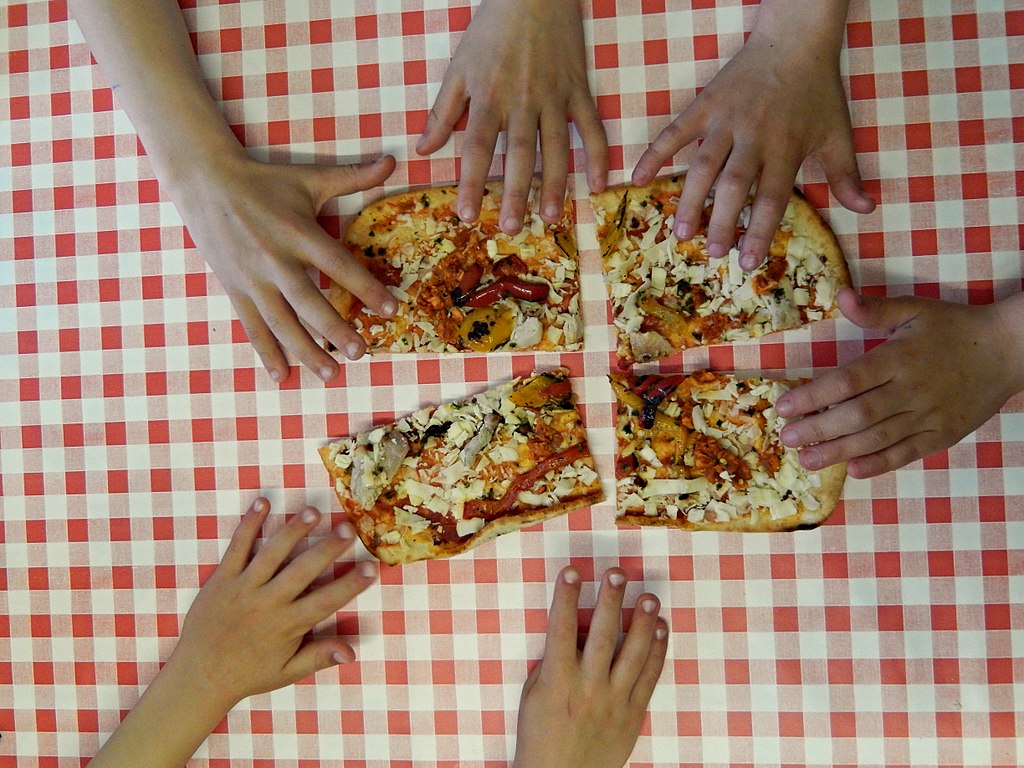 © Jeremy Segrott
© Jeremy Segrott
Sighs and light-hearted jokes about some of these guests persist in some places. “That family come every year, but they only ever order one pizza to share between the four of them.” The choice of footwear of some German-speaking and Czech visitors frequently draws chuckles, in particular, the classic sock and sandal combo. But, just where would the 2020 Croatia tourist season have been without the 60,000 Czech and Slovak visitors who this year arrived by train?
Just two days ago, Jutarnji reported on phenomenal numbers of Polish visitors this year. Would anyone else really have taken the place of the returning family of four sharing a pizza? Just what would the season in Makarska have looked like without bolan?
Croatians are famously very appreciative hosts. On the ground, there's no doubt that such loyal guests are warmly welcomed and thanked each year by accommodation renters, restaurateurs and others. They greet returning visitors with smiles of familiarity and reserve for them their favourite place. In September 2020, gratitude to such guests was echoed by The Croatian National Tourist Board as they launched a new campaign 'Thank you', directed at the tourists who this year chose Croatia.
Perhaps it is time to ensure that this gratitude extends into any grand new initiatives for growth in the Croatia tourist season? Such loyal guests should not be taken for granted, nor forgotten.
Initiative within the Croatia tourist sector is vital. The unlocking of continental Croatia's potential is simply a must. That too of the Dalmatian hinterland and inland Istria. The exploitation of world-class Croatian assets such as nature, agriculture and health and wellness services are also perfectly on-point. The desire to attract a better class of bigger-spending visitor to luxury holidays on the Croatian coast should surely be a lower priority. After all, eyes that covet can all too frequently fail to appreciate that for which they should already be thankful.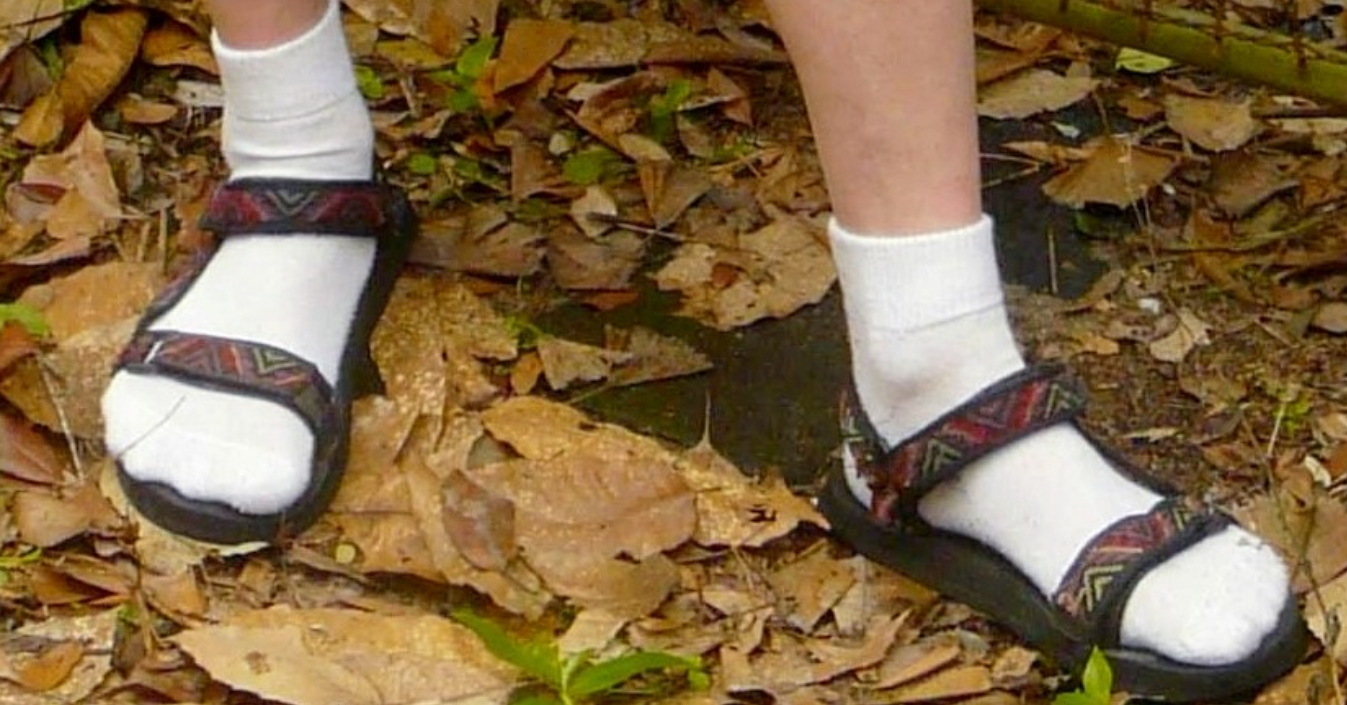 © Oddman47
© Oddman47
Lead image adapted from an original photograph by © Marco Verch
For the latest travel info, bookmark our main travel info article, which is updated daily.
Read the Croatian Travel Update in your language - now available in 24 languages
Expect Many English Speaking Visitors to Croatia in 2021, says Google
September 25, 2020 - Croatia is the 14th most searched holiday destination in the world for next year. With over 810, 000 searches on Google, the country should expect a big return of English speaking visitors to Croatia in 2021
Aside from the drop in numbers, the country's accessibility and the implementation of epidemiological guidelines, the biggest effect the Coronavirus pandemic had on Croatia's tourist season of 2020 was the change in visitor demographic. The British, Americans, Canadians and Australians largely stayed away. All that looks set to change next year as Google indicates a big return of English speaking visitors to Croatia in 2021.
Over 810, 000 searches have already been made of Croatia as a holiday destination for 2021 on Google, informing that many thousands are already researching or actively planning a trip. Croatia ranked 14th among the most searched for 2021 destinations, trailing slightly behind the likes of Italy, the Maldives, Mexico, Thailand, Spain and Greece.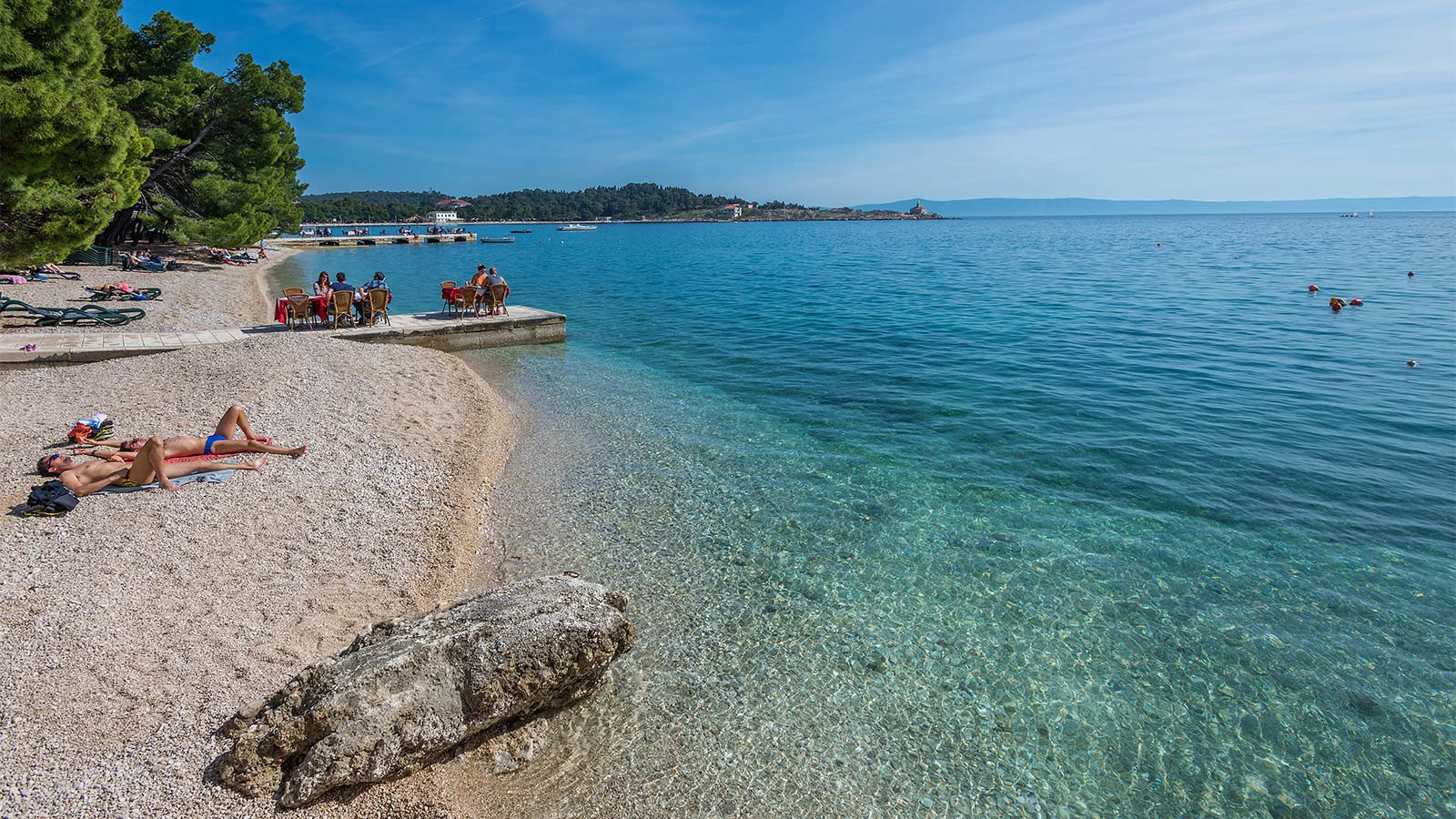 Their language mostly absent from beautiful Adriatic beaches in 2020, English speaking visitors to Croatia in 2021 look set to return © Croatian National Tourist Board
Their language mostly absent from beautiful Adriatic beaches in 2020, English speaking visitors to Croatia in 2021 look set to return © Croatian National Tourist Board
The good news for the return of English speaking visitors to Croatia in 2021 was published by the Electronic System for Travel Authorization (ESTA). The data has been taken from a period starting not before March 2020. This means that all searches took place in full knowledge of the ongoing Coronavirus and epidemiological situation. English speaking visitors are undeterred.
Iva Bahunek, the head of the Croatian Tourist Board in Los Angeles has not had the easiest of tasks since the pandemic began. Her appointment is a relatively recent one. Nevertheless, she has clearly done an excellent job of promoting Croatia as a destination for American tourists in 2021. She confirmed the trends are correct - that US citizens are ready for international travel again - by analysing data from the large American travel insurance company Squaremouth. 65% of all reservations for next year refer to international destinations.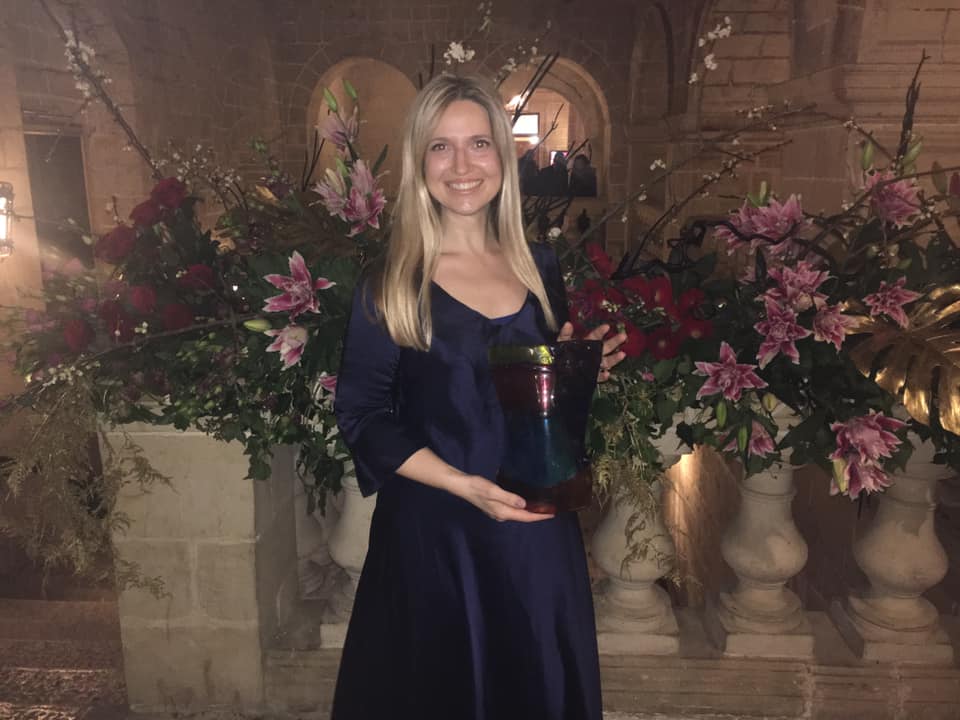 Iva Bahunek accepting her Mediterranean Stars Award for outstanding achievement in promoting Mediterranean tourism, awarded at the 6th Mediterranean Tourism Forum in Malta, 2019. She now heads the Croatian Tourist Board in Los Angeles and analysed data which backs up Google's prediction for a return of English speaking visitors to Croatia in 2021
Iva Bahunek accepting her Mediterranean Stars Award for outstanding achievement in promoting Mediterranean tourism, awarded at the 6th Mediterranean Tourism Forum in Malta, 2019. She now heads the Croatian Tourist Board in Los Angeles and analysed data which backs up Google's prediction for a return of English speaking visitors to Croatia in 2021
Indications from the British market are the same. Total Croatia News recently published an interview with Vedran Meniga, organiser of a music festival site in Sibenik that successfully hosted over 10, 000 festival-goers in summer 2020. Sadly, they were the only ones who braved it. All of the international music festivals that usually take place on the Croatian coast cancelled their 2020 events.
But, some organisers of these festivals have been seen in Croatia over recent weeks, inspecting improvements to the famous The Garden Tisno festival site, which lies at the approach to Murter island. The festival's hugely popular beach stage has had walls removed, its space widened and now looks very well equipped to take on social distancing advice. Music festivals bring tens of thousands of people to Adriatic beaches each summer and the return of the international events will entice English speaking visitors to Croatia in 2021. On the below video you can see Alex Lowes of the Suncebeat Festival and Nick Colgan of The Garden Tisno recently checking out the new layout of the site in preparation for the return of festivals in 2021.
For the latest travel info, bookmark our main travel info article, which is updated daily.
Read the Croatian Travel Update in your language - now available in 24 languages
YTD Tourism Results Better than Expected
ZAGREB, Sept 11, 2020 - In the first eight months of this year, 6.8 million tourists visited Croatia and generated 47.5 million overnight stays, which was at 41% and 53% respectively of last year's levels.
YTD tourism results are better than expected following the outbreak of the coronavirus infection, according to a statement made by Tourism and Sports Minister Nikolina Brnjac and the Croatian Tourist Board (HTZ) director Kristijan Stanicic at a news conference in Zagreb on Friday.
Of those 47.5 million overnight stays, the lion's share, 84%, were made in July and August, and in those two months, Croatia registered 5.2 million holidaymakers.
Addressing the news conference, Minister Brnjac thanked the stakeholders and businesses in the tourism sector for those results.
"Clearly, nobody finds this situation easy, however, the sector has shown that it has been well prepared and we thank everyone for these results," she said.
The minister says that the government adopted the right measures in a timely fashion to help keep jobs and liquidity in this industry.
The gradual reopening of the borders paved the way for the arrival of tourists, and the results are better than expected in all types of tourist accommodation, she added.
"Nautical tourism is one of the segments that has fared well, and currently there are about 300 mega-yachts in Croatia. We hope that this good season will continue."
Government assistance schemes for the tourism and hospitality industry will be in effect until the end of this year to help the sector make good preparations for 2021, and the minister recalls that part of the money will be ensured from the European Union's funds.
She announced the preparation of a strategy for sustainable tourism with the engagement of experts in drawing up the document.
About 200,000 tourists currently vacationing
HTZ director Stanicic said that about 200,000 tourists were currently vacationing in Croatia.
He said that HTZ campaigns on social networks had registered hundreds of millions of visits.
Stanicic also commented on some negative campaigns on foreign markets that were unfavorable for Croatia.
We tried to respond to that "with certain positive and fact-based messages," he said.
When asked about the financial effects of the tourist turnover, Stanicic said that one should wait for the end of the year.
The director of the Croatian Association of Tourism (HUT), Veljko Ostojic, said that given the circumstances, the results in the sector were the best possible.
In hotels, overnight stays in the first eight months were at 30.4% of the levels in the corresponding period last year, Ostojic said, warning that the financial effects would be even lower.
Ostojic and the head of the Association of the Croatian Travel Agencies (UHPA), Tomislav Fain, agreed that the assistance provided by the government had been essential to keep the sector in motion.
The head of the association of marinas within the Croatian Chamber of Commerce (HGK), Sean Lisjak, told the news conference that marinas were satisfied with this year's results.
For the latest travel info, bookmark our main travel info article, which is updated daily.
Read the Croatian Travel Update in your language - now available in 24 languages
Economy Minister for Boosting Industries Besides Tourism
ZAGREB, September 7, 2020 - Economy and Sustainable Development Minister Tomislav Coric said on Sunday the government would insist on boosting other industries besides tourism and that Croatia would enter 2021 with projects ready for a €22 billion EU envelope.
In the first phase of the crisis, he told public TV, the government projected that GDP would fall a little over 9%, with HRK 35-40 billion in damage to the economy, but the tourist season has been better than expected so the government hopes the GDP fall will be lower.
"Job retention measures will cover a little less than 100,000 workers. After the summer season, there has been a decrease in the number of those employed for years, and the same is expected this year," Coric said but added that the decrease would not be catastrophic as some claimed. "We guarantee it, just as that we will retain most jobs."
Tourism's big GDP share makes Croatia vulnerable in terms of the economy and responses to shocks such as COVID-19, he said.
That is why, he said, the government will insist on boosting other industries while encouraging the development of tourism, first and foremost by extending the season. "But the accent will be on production activities because it's the segment in which Croatia has been suffering for years."
The intention is to absorb as much money as possible to raise the competitiveness of domestic production and exporters, "primarily the technical level, which opens a long term development perspective as part of the European Green Deal," the minister said.
We are a small, open economy and the €22 billion envelope will suffice to help our production sector, he said. "That's why I insists that production is in the focus of all our programmes, both the recovery and resilience packages as well as the 2021-2027 multiannual financial perspective."
Asked how much European funds could help and when Croatia could expect them, Coric said the government had a plan and that the intention was for as much as possible of the envelope to be channeled towards the economy.
The details are still unknown but, in communication with Brussels and between ministries, we are discussing the projects which should be up front, he said.
"Croatia will certainly enter 2021 with projects ready. What awaits us in 2021, after this challenging year 2020, is economic recovery. We must do our best for this recovery to cause higher GDP growth rates in the long term," Coric said, adding that investing in production was the right avenue.
For the latest travel info, bookmark our main travel info article, which is updated daily.
Read the Croatian Travel Update in your language - now available in 24 languages
Minister: All Options For Aid To Hospitality And Tourism Sector On Table
ZAGREB, Sept 2, 2020- Tourism and Sports Minister Nikolina Brnjac said on Wednesday that all options for helping the hospitality and tourism sector were "on the table", recalling that restaurant and bar owners were the first to receive help from the state when the corona crisis started.
We talked with the entire hospitality and tourism sector about how to continue with the measures, all options are now still on the table, said Brnjac in front of the government building while answering reporters' questions about the continuation of aid and whether the state has the funds to help restaurant and bar owners requesting it because they are facing bankruptcy and liquidation.
Asked about the continuation of measures for the hospitality and tourism sector in terms of the recent statement by Finance Minister Zdravko Maric that aid must come to an end one day, Brnjac reiterated that all of them were being taken care of and that possibilities for the continuation of the aid were discussed at meetings every day.
She recalled that through the recovery and resilience facility guidelines would define which funds would be in the forms of grants and which in the form of loans. "That will be the source of most funding," she underscored.
Asked whether that meant it was possible that the state would continue financing the hospitality sector, she underlined that "we have to have all options before us," that the hospitality sector had been the first to get help from the state, and that viability had to be taken into account. She underscored the importance of preserving jobs.
Asked about aid for transport operators working on an occasional basis, who on Wednesday demonstrated outside the government calling for urgent aid because the corona crisis has left them with almost no income and numerous jobs are in danger, Minister Brnjac confirmed that transport operators, as well as travel agencies, had seen a slump in turnover, which is why representatives of agencies had been to the Ministry last week.
"We have also discussed with employees from other ministries about how to help them and provide measures for business viability," she added.
"It is important for us that the season continues in September because the situation is not the same in entire Croatia, and the promotional campaign will be adjusted to that," the minister noted.
For the latest travel info, bookmark our main travel info article, which is updated daily.
Read the Croatian Travel Update in your language - now available in 24 languages


